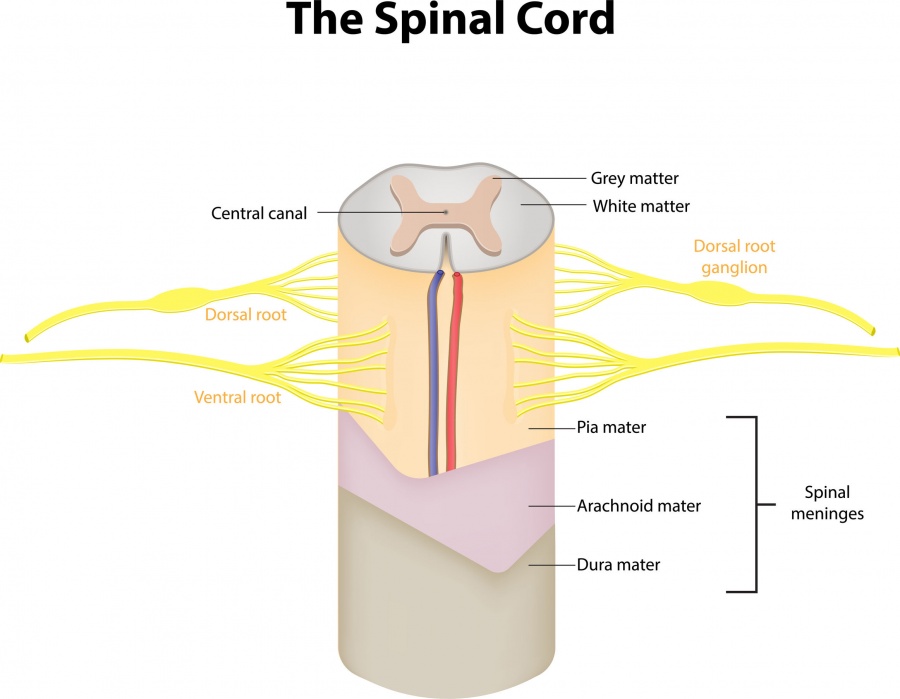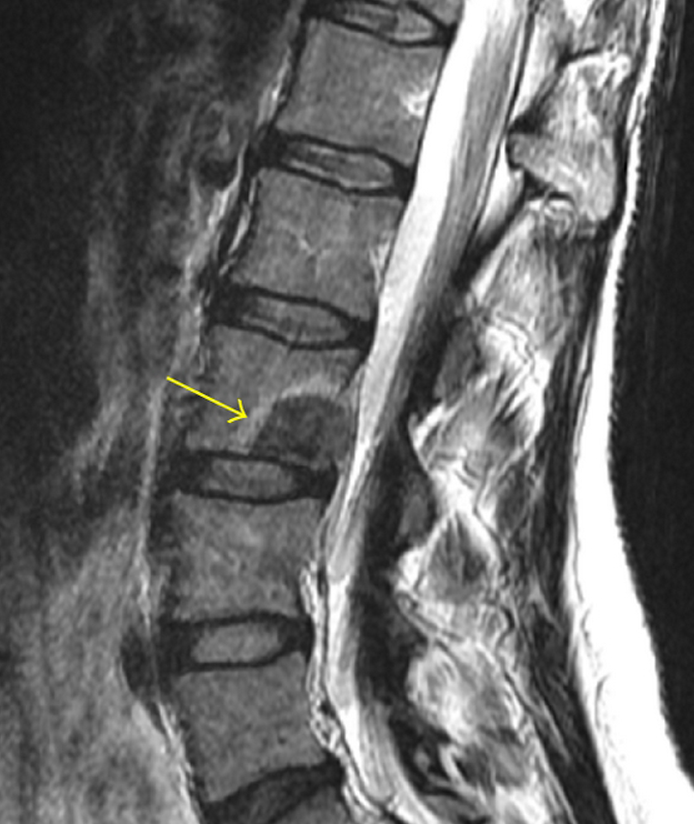Spinal Metastatic Disease
Metastatic cancers are quite dangerous, and they account for about 70% of all tumors of the spine. The 3rd most common site for metastatic cancer is the spine. A metastatic spinal tumor results when cancer that begins in other parts of your body spreads to your neck or back.
Further, these metastatic cancers can affect any part of the spine. They can invade bones (the spinal vertebrae), spinal cord, nerves, and the outer protective membranes of the cord like dura mater, arachnoid mater, and pia mater.
What is a Metastatic Spinal Tumor?
A common target for metastatic cancer is the spine. Many cancers that originate in other places like the breast, lung, and gastrointestinal tract tend to travel to the spine and affect it. Some primary sources of metastatic spine cancer are lymphoma, melanoma, prostate, and kidney.
Bone metastasis interferes with the two types of cells in the bones of the spine. Osteoblasts and Osteoclasts are two cell types that are responsible for maintaining healthy bones.
While osteoclasts help in the breakdown of an old bone while osteoblasts help in the formation of a new one. Our bones are strong and healthy when both of these cells work in a balanced fashion.
A metastatic spine tumor falls into 3 main groups:
Extradural, or epidural tumors: Most of the metastatic spine tumors fall into this group. They travel from different locations in the body and grow in the bones of the spine.
Intramedullary: These are very rare and include only 5 to 10 percent of all spinal tumors. Most often, they grow in the neck (cervical) region of the spinal cord.
Intradural-extramedullary: Mostly, these tumors grow in the spinal cord’s arachnoid membrane that is outside of the spinal cord. Also, it can affect the nerve roots around the spinal cord and its base.


Causes of Metastatic Spinal Tumors?
Researchers are not yet aware of the causes and risk factors of spinal metastatic disease. Further, they don’t also k ow why cancer metastasizes in some people while not affect others. However, it is clear how the development of these tumors occurs.
A metastatic tumor results when cancer cells leave an original tumor site. They do so by entering the bloodstream and lymph vessels. Thus, this is the way how they spread from one area to another.


Death of most of the tumor cells occurs when they leave their primary site. However, some cells can form tumors in other parts by settling and thriving there.
Therefore, a new tumor forms by a process known as metastasis. It becomes quite tough to control cancer when it reaches this stage.
Symptoms?
If the metastatic tumor spreads to your neck and back, it can result in significant symptoms. Thus, the tumor will affect your bones and nerves (spinal structures).
The spine is an important part of central and peripheral nervous systems and other biomechanical functions. Besides, it also provides structural support to the body. The spinal metastatic disease results in several symptoms;
Back Pain: Depending on the location of the tumor in the spine, back pain, and/or neck pain is the first sign of a metastatic spinal tumor. There is an intense pain that has no cause seemingly, for example, from an injury.
Thus, pain in the mid-back or low-back regions is by far the most common symptom. Furthermore, the pain worsens during the night-time hours and at the times of physical activity. In addition to this, compression of the spinal cord may occur due to metastatic spinal tumors.
Different neurological symptoms like numbness, paralysis, difficulty walking, tingling, loss of bowel/bladder control, and weakness result due to the compression of the spinal cord (for example cervical myelopathy). This compression may also result in the death of patients in severe cases.
Other structural changes in the spine that result in deformities, such as scoliosis and vertebral compression fracture may also be a sign of spinal metastasis.
How to manage your symptoms?
It is quite difficult to manage the symptoms of metastatic spinal disease. But you should not and need not do it alone. The team for the treatment of your spinal cancer may include several specialists. These include primary care physician, medical oncologist, interventional radiologist, spine surgeon, and radiation oncologist. Your doctors will devise a treatment plan along with you to address the symptoms and diagnosis of your cancer.
Steps to diagnose your cancer?
The first step will be a thorough review of your medical history and in-depth physical and neurological examination. Also, your surgeon will ask for the results of blood tests if you have been doing any before. To have a better understanding of your overall health, your doctor may ask you for some additional lab tests too.
To get specific information about the spinal tumor size, location, density, etc., imaging tests are necessary. These tests include x-rays, CT scans, and/or MRI. Meanwhile, your technician may perform a CT and MRI scan with or without contrast. X-ray is not a suitable test usually for this cancer. As it won’t reveal spinal cord or nerve damage, your technician may perform this test at an earlier stage.
Since MRI and CT scan better define the tumor and its impact, thus your physician will opt for them. They help in defining the tumor, even in earlier stages.


Biopsy: Remove some tissue for testing.
Your doctor will collect a sample of cells or tissue from your affected area and use it for laboratory testing. These tests help find whether tissue is cancerous or not. It also helps to find the type of cancer and the grade (aggressiveness) of cancer.
Biopsy procedures that help in the diagnosis of osteosarcoma:
Surgical biopsy: Your doctor will make an incision through the skin and removes either a portion of the tumor (incisional biopsy) or the entire tumor (excisional biopsy).
Needle biopsy: The doctor removes small pieces of tissue from the tumor by inserting a thin needle through the skin and guides it into the tumor.
It needs careful planning by the medical team to determine the type of biopsy needed and determining how a doctor should perform it.
A doctor should perform the biopsy in a way so that it doesn’t interfere with future surgery to eliminate cancer. That’s why you should ask your doctor to refer a team of experts with extensive experience. They will help you treat cancer before the biopsy.
How to treat this cancer?
People are more likely to develop a metastatic spinal tumor if they have a history of cancer or are over age 50. Thus, it could be life threatening o have an untreated metastatic spinal tumor that grows continuously.
Thus, treatment of metastatic spinal tumor is dependent on many factors which include the patient’s overall life expectancy and health. Your doctor will try his/her best to preserve your neurological function (like walking) during this.
Radiation therapy, chemotherapy, and/or surgery are some options for metastatic spinal tumor treatment. A doctor will recommend palliative care in case the patient is unlikely to tolerate surgery well, or the cancer is advanced. In this case, rather than curing or removing a tumor, the doctor focuses on reducing pain and living comfortably.
Coping and support
When you get diagnosed with spinal metastatic disease, it could be frightening for you as well as your family. You may learn to cope with the uncertainty and distress related to cancer with time. You need to follow these instructions until then;
Call on for medical support:
Various things are going to help you. The knowledge and understanding of a medical social worker, or any other mental health professional will help you in understanding your cancer.
If your child or other family member suffers from cancer, you need to ask health care professionals for advice. They will provide you with options for medical health support as well as emotional and social support.
In addition to this, you can check various online services that will provide you support to combat cancer.
- Gain more knowledge about spinal metastatic disease to make decisionsabout control and care:
Ask your doctor about various treatment options related to spinal metastatic disease. Little knowledge is dangerous. Therefore, more confidence in understanding and making decisions about treatment options will be there with you. So you should always learn more about the disease.
Ask the health care team for guidance if your child has cancer. Get more and more information for appropriately caring for the patient.
Be close to your friends and family:
A close and strong relationship with your family and friends will help you deal with spinal metastatic disease.
You need practical support, moral support from your friends and relatives. Someone should be there for you to look after the family. Emotional support from them is going to matter most. A healthy and happy person will ultimately efficiently fight the disease.
What you should expect from your doctor:
You will face several questions from your doctor. You should be ready to answer to give more time to your doctor to address them. Your doctor may ask;
What signs and symptoms concern you more?
Have your symptoms been occasional or continuous?
When did you start to notice the symptoms?
The severity of your symptoms?
Is there anything that improves your symptoms?
Is there anything that worsens your symptoms?
Do you have any family or personal history of cancer?
